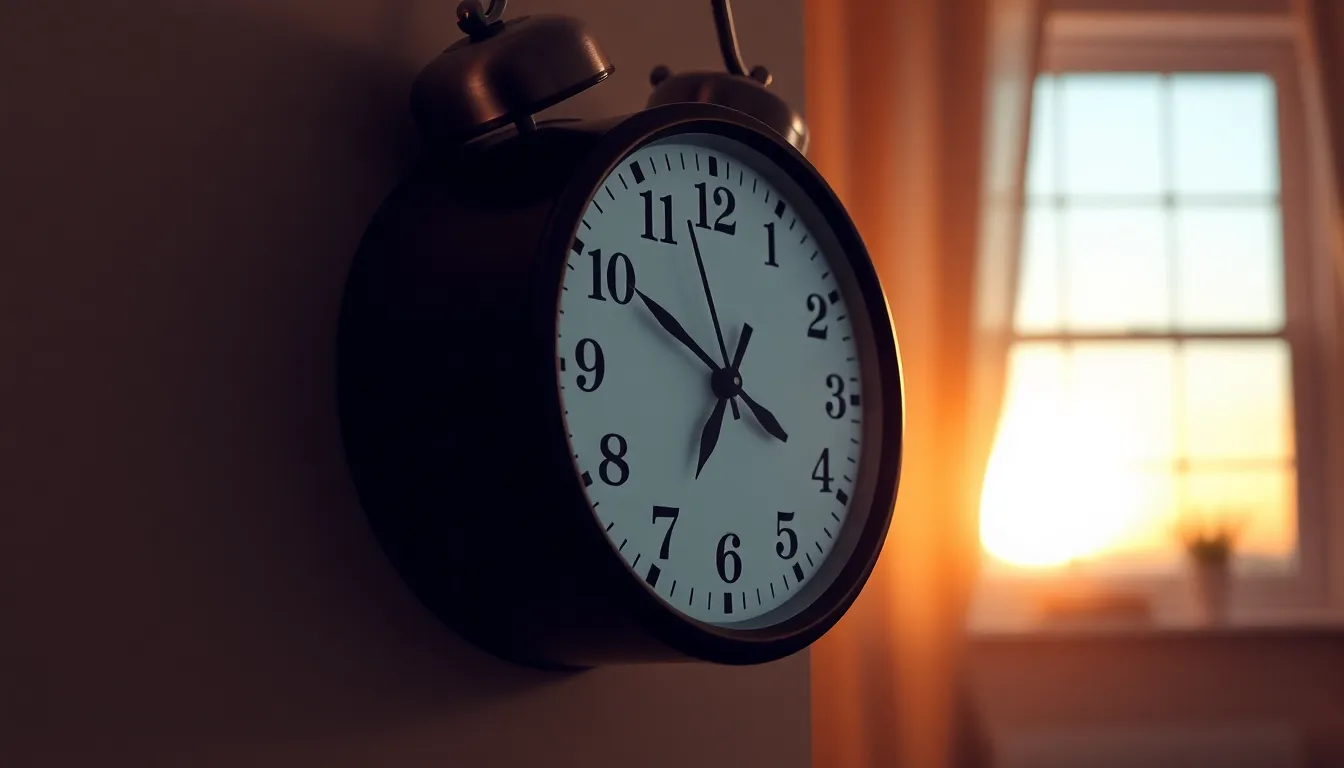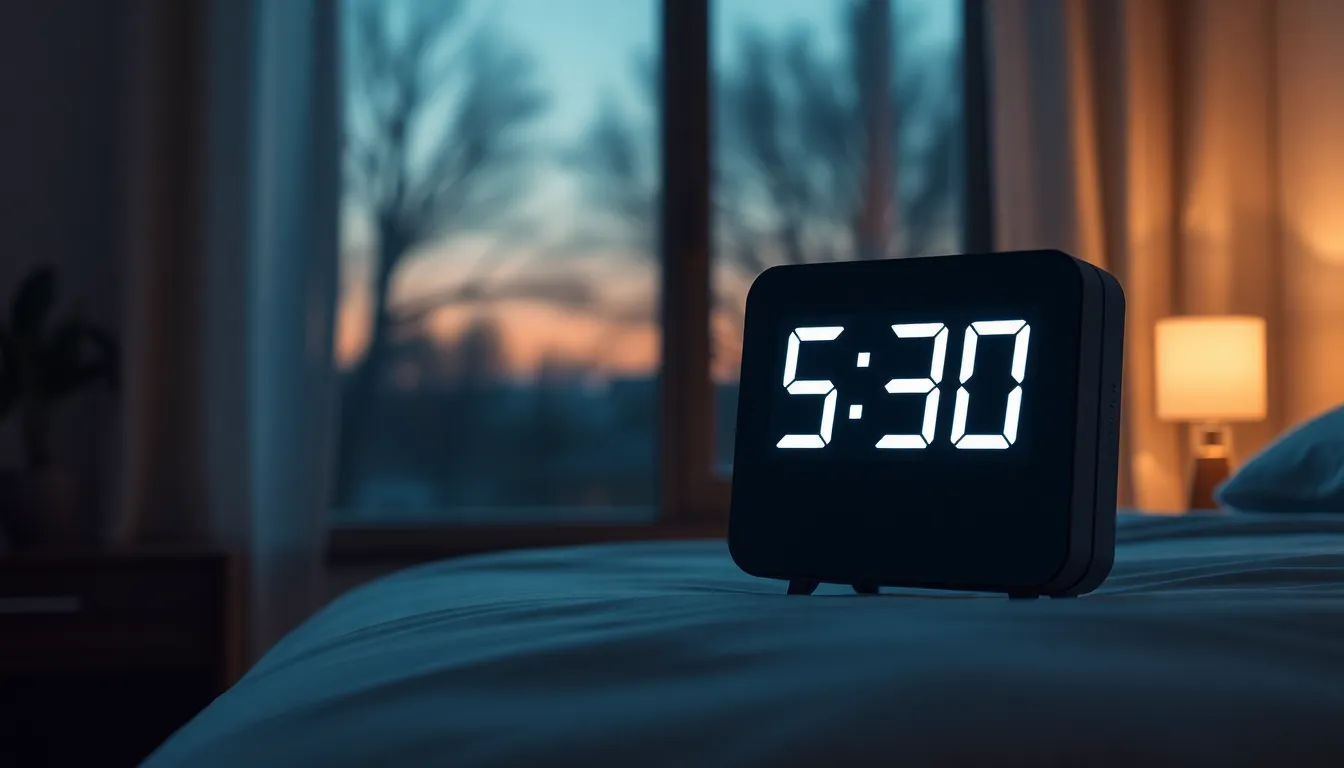As the clock ticks toward that dreaded hour, many find themselves pondering the eternal question: how long until 6:30 AM? Whether it’s the sound of an alarm that feels more like a war siren or the realization that the snooze button has become their best friend, the struggle is real.
Table of Contents
ToggleUnderstanding Time Calculations
Time calculations play a crucial role in determining how long until 6:30 AM, especially with varying time zones. Knowledge of time zones enables individuals to plan their schedules effectively and avoid confusion related to early morning commitments.
The Concept of Time Zones
Time zones define the local time across different regions. Coordinating various time zones ensures consistency when scheduling meetings or events. For instance, Eastern Standard Time (EST) is 5 hours behind Coordinated Universal Time (UTC-5). Knowing the specific time zone allows for accurate calculations of the remaining time until 6:30 AM. It becomes essential when people communicate across distances, reducing misunderstandings about time.
Importance of Knowing the Time
Understanding the current time is vital for maintaining daily routines. Individuals often base their waking schedules on the time displayed on devices. Accurate time awareness helps manage productivity and commitments. Particularly in the context of waking up, knowing how long until 6:30 AM can reduce morning anxiety and improve preparedness for the day ahead. Calculating the remaining hours or minutes until that early hour also fosters responsible planning and time management skills.
Factors Influencing Time Calculation


Understanding how long until 6:30 AM involves several key factors. Each plays a critical role in determining time accurately.
Current Local Time
Current local time establishes the starting point for any time calculation. In determining how much time remains until 6:30 AM, knowing the exact hours and minutes is essential. For example, if it’s 5:00 AM, there’s one hour and thirty minutes left. Conversely, if it’s 6:15 AM, only fifteen minutes remain. Clock differences in locations can create confusion, so checking a reliable source helps maintain accuracy. Especially important is noting AM or PM when citing current time, as this distinction prevents miscalculations.
Daylight Saving Time Adjustments
Daylight Saving Time can significantly impact time calculations. Clocks typically advance by one hour in spring and revert in fall. When calculating remaining time until 6:30 AM during this period, individuals must account for these changes. For example, if Daylight Saving Time is in effect and the clock shows 5:30 AM, an adjustment occurs, making it effectively 4:30 AM standard time. Missing this adjustment may lead to misjudging how long until 6:30 AM. Awareness of local Daylight Saving Time rules aids accuracy in planning, crucial for managing morning commitments effectively.
Methods to Calculate Time Until 6:30am
Knowing how to calculate time until 6:30 AM enhances planning and reduces anxiety about early mornings. Various methods exist for determining the hours and minutes left until this crucial time.
Mental Calculations
Calculating time mentally involves a few simple steps. First, identify the current local hour and minute. Next, subtract these values from 6:30 AM. If the current time is, for example, 5:00 AM, then the calculation reveals that 90 minutes remain. Understanding how to break down time into hours and minutes allows for quicker assessments. Individuals might find it helpful to visualize the clock, making the computation more intuitive. Performing these calculations regularly improves accuracy and speeds up the process.
Using Clocks and Timers
Using clocks and timers offers a reliable way to track time until 6:30 AM. Digital clocks display the exact time clearly, making it easy to see how many hours and minutes are left. Setting a countdown timer is another effective method. Timers can be programmed for specific durations, such as setting one for 90 minutes if the current time is 5:00 AM. Smart devices also provide notifications as 6:30 AM approaches, serving as reminders. Employing these tools enhances punctuality and helps individuals better prepare for their morning routines.
Practical Applications
Understanding time until 6:30 AM carries practical implications for daily activities. Individuals can face significant impacts on their productivity and planning by recognizing the remaining time before this early hour.
Scheduling Events
Scheduling events effectively is key to ensuring punctuality. Knowing how long until 6:30 AM allows individuals to allocate appropriate time for preparation. For instance, if a meeting starts at 6:30 AM, factoring in travel time becomes essential. When setting appointments, keeping local time zone differences in mind helps in avoiding conflicts. During planning sessions, simply checking the time until 6:30 AM provides clarity on availability. This knowledge permits individuals to better manage their schedules, making every minute count.
Setting Alarms
Setting alarms thoughtfully helps individuals wake up prepared for the day. Individuals benefit from programming alarms with consideration for their current local time. Alarm settings can leverage simple time calculations to ensure the right wake-up moments. Positioning alarms five to ten minutes before needed wake-up times accommodates snooze button habits. Creating multiple alarms may help those who struggle to rise early. Adding melodies or sounds that motivate can enhance the waking experience, setting a positive tone for the day ahead.
Understanding how long until 6:30 AM can significantly impact an individual’s morning routine. By recognizing the current local time and making necessary adjustments for time zones and Daylight Saving Time, they can alleviate anxiety and enhance their preparedness for the day ahead.
Implementing thoughtful alarm strategies and scheduling techniques fosters better time management and punctuality. With these insights, individuals can transform their mornings from a source of dread into an opportunity for productivity. Embracing these practices not only helps in meeting commitments but also promotes a more organized and fulfilling daily life.




